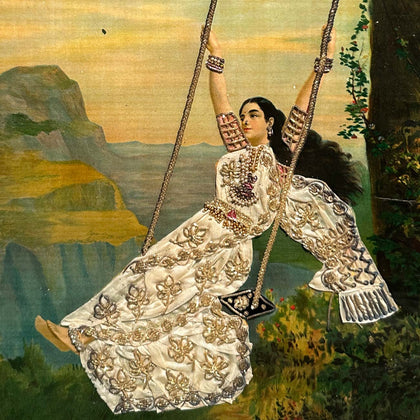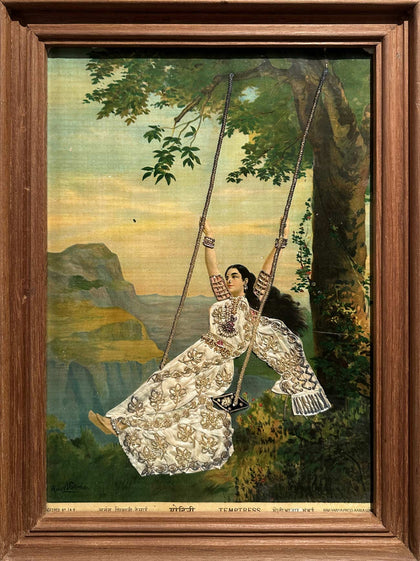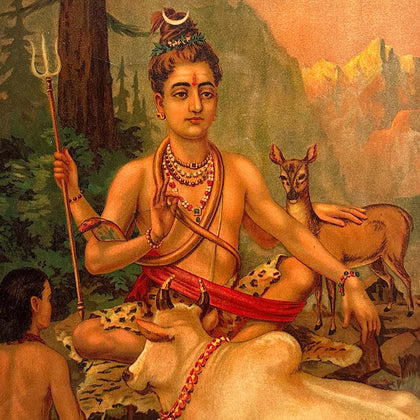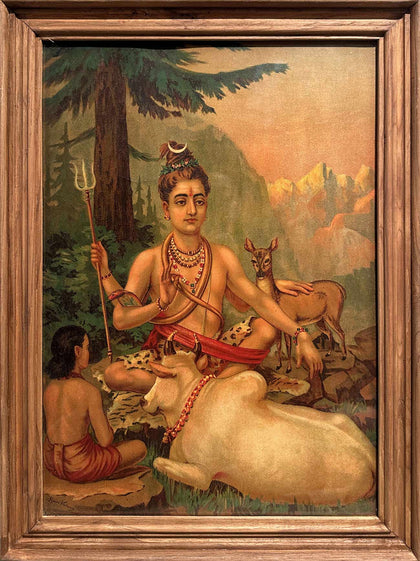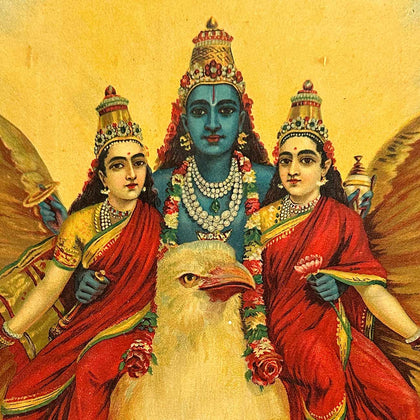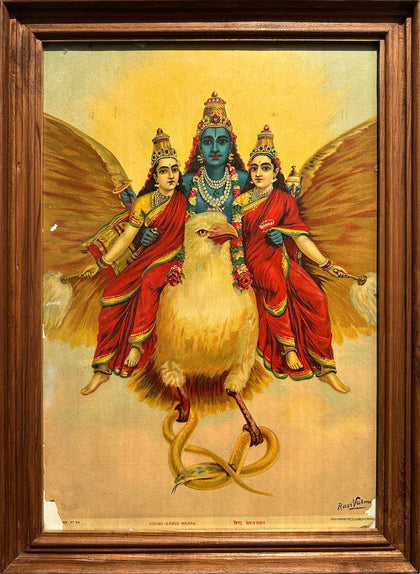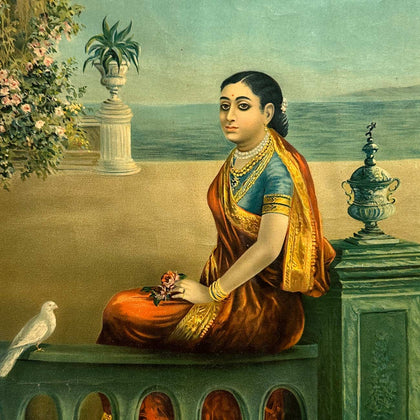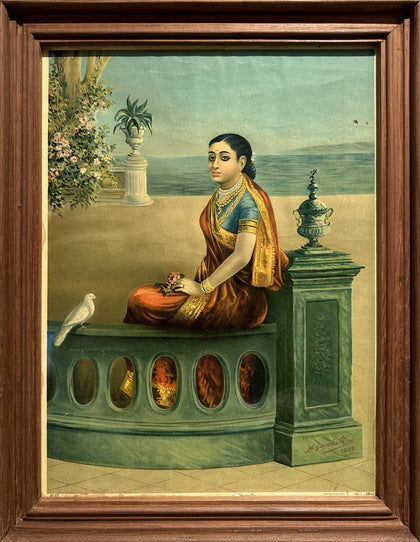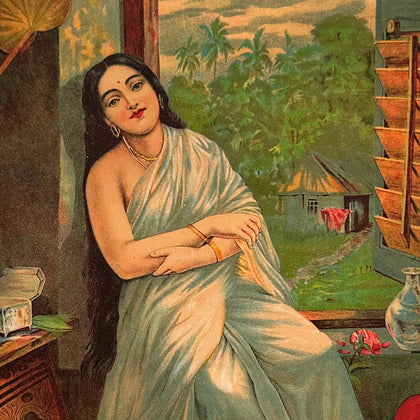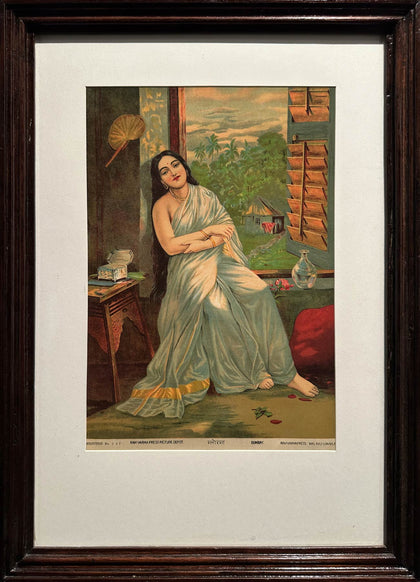Loading...
Mohini - III
by Raja Ravi VarmaPrice on Inquiry
All orders are insured for transit.
This item cannot be shipped outside India.







































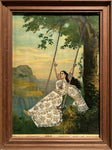













Please enter the email address linked to your Artisera account, and we will send you a link to reset your password.
Sign Up to access your Wish List and hear from us on all that’s new!
Loading...
All orders are insured for transit.
This item cannot be shipped outside India.
All orders are insured for transit.
This item cannot be shipped outside India.
| Size: | 28 x 19 inches |
| Condition: | Good Condition |
| Period: | Early 20th Century |
| Medium: | Oleograph |
| Signature: | Signed by Ravi Varma |
Raja Ravi Varma (1848-1906) was a celebrated Indian artist, famous for his realistic portrayal of Indian gods, goddesses and mythological characters, in scenes adapted mainly from the Mahabharata, Ramayana and the Puranas.
Considered to be one of the greatest painters in the history of Indian art, Ravi Varma fused European techniques with a pure Indian sensibility. Though a protégé of royalty, Raja Ravi Varma was the first to make prints (or lithographs) of his artworks affordable and easily available, bringing fine art to the masses. In fact, the Raja Ravi Varma Press was started in Mumbai by him in 1894, and managed by his brother Raja Varma, before being bought over by a German company.
An original 1890 Ravi Varma oil on canvas, titled 'Radha In The Moonlight' was sold for a whopping Rs. 20 crores at a Pundole auction in November 2016.
Oleographs, also called chromolithographs, are multi-colour art prints, stemming from the process of lithography. Pioneered in the 1830s, the process of producing oleographs came into wide commercial use in the 1860s. The technique relied on using several woodblocks or stones with colours for printing, while hand-colouring remained an important aspect as well. Depending on the number of colours present, an oleograph could take months to produce by very skilled workers. Poor preservation and cheaper printing alternatives have made oleographs hard to find. Today, they are mainly used as fine art.
| Size: | 28 x 19 inches |
| Condition: | Good Condition |
| Period: | Early 20th Century |
| Medium: | Oleograph |
| Signature: | Signed by Ravi Varma |
All orders are insured for transit.
This item cannot be shipped outside India.
This item has been added to your shopping cart.
You can continue browsing
or proceed to checkout and pay for your purchase.
This item has been added to your
shopping cart.
You can continue browsing
or proceed to checkout and pay for
your purchase.
This item has been added to your wish list.
You can continue browsing or visit your Wish List page.
Are you sure you want to delete this item from your Wish List?
Are you sure you want to delete this
item from your Wish List?

Thank you for sharing your email address!
You’ll shortly receive a Welcome Letter from us.
Please check your spam folders if you can’t
locate the email in your inbox.
Thank you for sharing your email address! You’ll shortly receive a Welcome Letter from us. Please check your spam folders if you can’t locate the email in your inbox.

